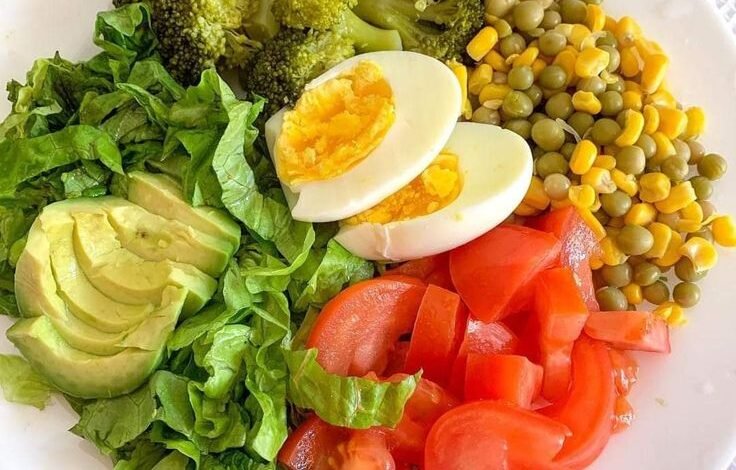Valencia Diet: A Balanced Approach to Healthy Eating
Valencia Diet: A Balanced Approach to Healthy Eating

The search for balanced, sustainable, and culturally rich diets often leads to the Mediterranean region. Among the gems of this region is the Valencia Diet, inspired by the vibrant and flavorful culinary traditions of Valencia, Spain. Known for its fresh ingredients, simple preparation, and deep cultural roots, the Valencia Diet is more than just a way of eating—it’s a way of life.
Whether you’re seeking a balanced approach to weight management, a natural boost in energy, or simply a better way to enjoy your meals, this blog will guide you through everything you need to know about adopting the Valencia Diet.
What Is the Valencia Diet?
Hailing from the heart of Spain’s Mediterranean coast, the Valencia Diet is built on ancient culinary traditions shaped by the region’s climate, culture, and agricultural abundance. It’s less of a prescriptive plan and more of a lifestyle rooted in the natural, seasonal bounty of the earth.
The principles of the Valencia Diet revolve around:
- Freshness: Using local and seasonal ingredients.
- Simplicity: Allowing the natural flavors of food to shine without heavy sauces or unnecessary steps.
- Community: Sharing meals with family and friends is foundational.
Typical dishes, such as the world-famous paella, showcase the essence of this diet—fresh seafood, vegetables, and rice blended with olive oil and fragrant spices like saffron.
Adopting this diet isn’t just about eating; it’s about connecting with food, people, and traditions in a meaningful way.
The Benefits of the Valencia Diet
Switching to the Valencia Diet can deliver a wealth of health benefits that extend beyond your plate. Scientific studies about Mediterranean-style diets back many of these benefits, providing clear evidence that they promote long-term well-being.
1. Promotes Heart Health
Rich in monounsaturated fats from olive oil and omega-3 fatty acids from fish, the Valencia Diet naturally supports a healthy cardiovascular system. Research shows these fats can reduce harmful LDL cholesterol levels while boosting good HDL cholesterol.
2. Helps with Weight Management
Since the Valencia Diet prioritizes whole foods like vegetables, lentils, and lean proteins, it keeps calorie counts under control while delivering sustained energy. For those aiming to lose weight without resorting to fad diets, this is a sustainable option.
3. Reduces Risk of Chronic Diseases
Packed with antioxidants from fresh produce like tomatoes and oranges, the Valencia Diet helps combat inflammation—a key driver of chronic diseases like diabetes and cancer.
4. Enhances Digestion
Whole grains such as barley and brown rice, alongside fiber-rich vegetables and legumes, make digesting meals easy and prevent gut-related issues.
5. Supports Mental Well-being
The communal and satisfying spirit of the Valencia Diet, coupled with omega-3-rich fish, has been linked to a reduction in symptoms of depression and improved cognitive function.
Key Components of the Valencia Diet
Now that you know the benefits, it’s time to explore the building blocks of the Valencia Diet. The secret lies in a beautiful mix of natural, wholesome ingredients.
Fresh, Seasonal Produce
Tomatoes, peppers, zucchini, eggplant, and citrus fruits like oranges are staples. These vitamin-rich essentials elevate dishes with color, texture, and tons of nutritional goodness.
Whole Grains
Whole grains like brown rice, quinoa, and barley replace refined carbs, delivering a steady source of energy.
Fish and Seafood
Being a coastal region, Valencia’s cuisine places significant emphasis on fresh seafood, with favorites like sardines, tuna, and shrimp. These offer lean protein and beneficial omega-3 fatty acids.
Olive Oil
Often referred to as “liquid gold,” olive oil is at the core of this diet. It’s used generously in cooking and dressings, providing heart-friendly fats.
Legumes
Chickpeas, lentils, and beans frequently feature in stews and salads, providing plant-based protein.
Spices and Herbs
Instead of overly processed seasonings, the Valencia Diet relies on fresh garlic, parsley, paprika, saffron, and cilantro for layered, natural flavors.
Minimal Processed Foods
Packaged and processed items are rare. Instead, the focus is on meals made from scratch with raw ingredients—just like grandma used to make.
How to Incorporate the Valencia Diet into Your Lifestyle
Transitioning to the Valencia Diet doesn’t need to be overwhelming. These tips will make the process seamless and enjoyable:
Plan Your Meals Around Fresh Ingredients
Visit local farmer’s markets or grocery stores to stock up on seasonal produce. Base your meals around vegetables, whole grains, and lean proteins.
Start with Simple Recipes
Ease into the diet by preparing simple dishes such as a tomato and garlic pasta or roasted fish with olive oil and lemon.
Adopt a “Less is More” Approach
Focus on wholesome ingredients rather than overly complex recipes. The true art of the Valencia Diet lies in simplicity!
Share Meals with Others
Make dinner a family or communal event. Eating together not only strengthens bonds but aligns with the cultural roots of the diet.
Make Gradual Swaps
Start replacing butter with olive oil, refined carbs with whole grains, and red meat with fish or legumes.
Experiment with Valencia-Inspired Dishes
Try your hand at classic recipes like the Valencian Paella or a zesty orange salad.
Success Stories from the Valencia Diet
Many have transformed their health and relationship with food by adopting the Valencia Diet. Here are just a couple of inspiring testimonials:
- Laura, a 32-year-old busy mom, shares, “Switching to the Valencia Diet helped me lose 15 pounds within three months. I no longer feel bloated and absolutely love the variety of flavors!”
- Sam, a food blogger, says, “Cooking simple Valencia-inspired dishes has not only improved my health but also brought more life into my content.”
Hearing from those who have thrived shows how sustainable and rewarding this lifestyle can be.
Avoiding Potential Pitfalls
While the Valencia Diet is intuitive, it comes with challenges. Here’s how to overcome them:
- Sourcing Ingredients: If some authentic ingredients like saffron or fresh seafood are unavailable, use substitutions (e.g., turmeric for saffron).
- Social Settings: Dining out can be tricky at times. Stick to simple, Mediterranean-inspired menu choices and always ask for olive oil-based dressings or sauces.
- Prep Time: Preparing meals from scratch takes time. Batch-cook grains and legumes or pre-chop veggies to save time during busy weeks.
By planning ahead and making gradual adjustments, these hurdles can be easily managed.
Your Journey to Better Eating Starts Here
The Valencia Diet is more than just a way to eat—it’s a way to reconnect with food, health, and culture. Through fresh, wholesome ingredients and mindful preparation, it brings joy, flavor, and vitality to your daily meals.
Are you ready to take on the flavors of Valencia? Start small by integrating one recipe a week or swapping your regular cooking oil for olive oil. We’d love to hear about your experiences or see your creations—share them in the comments below or tag us on social media!
For some inspiration, try out our Valencia-Style Grilled Vegetables recipe today and fell in love with Mediterranean simplicity.



